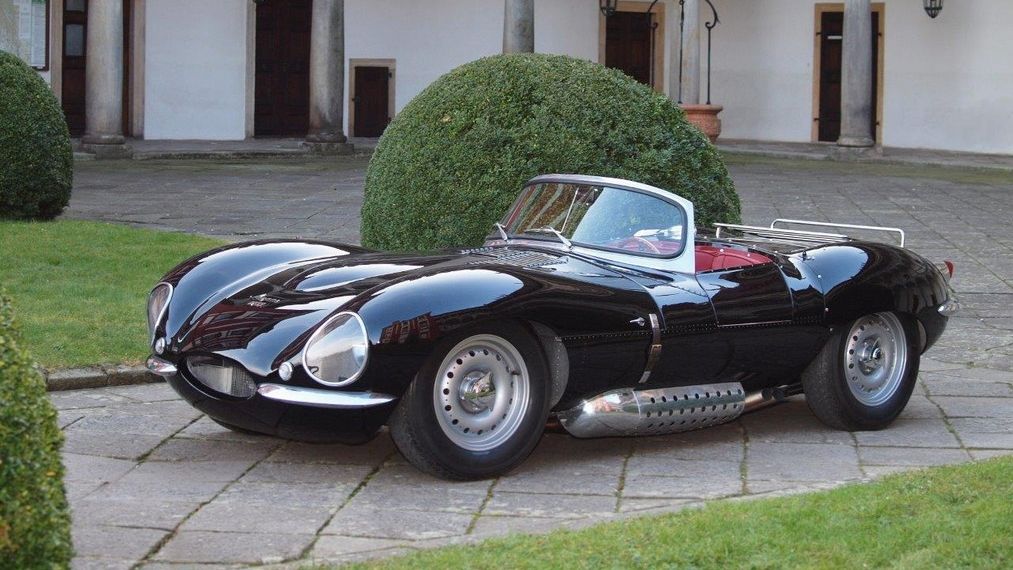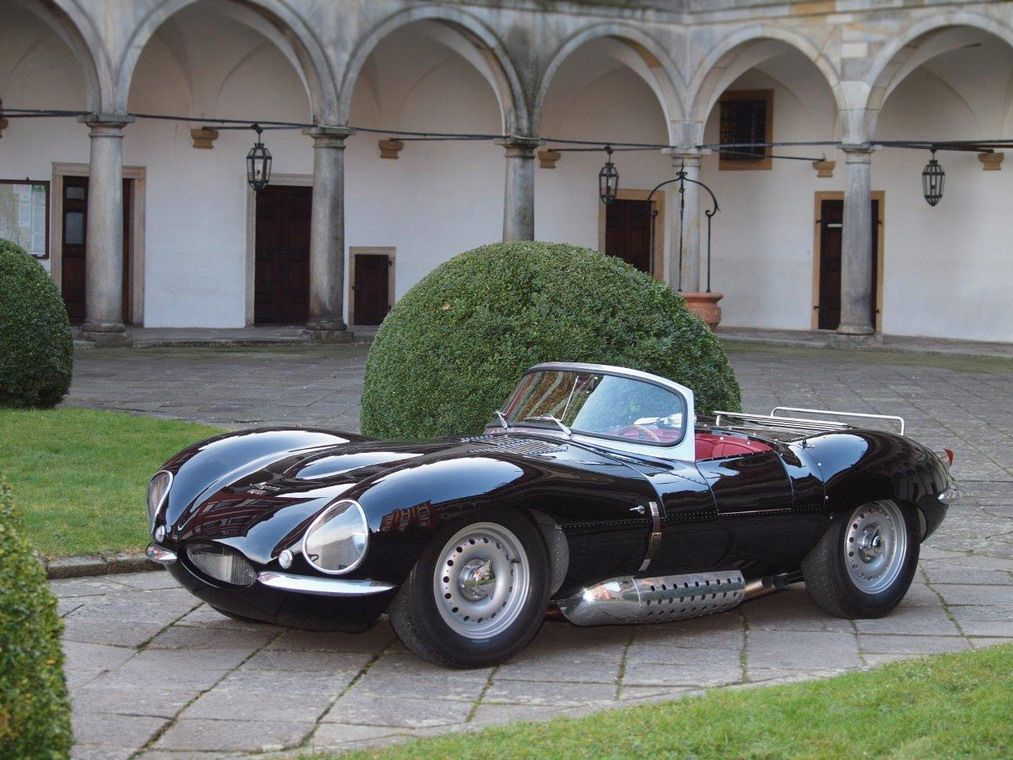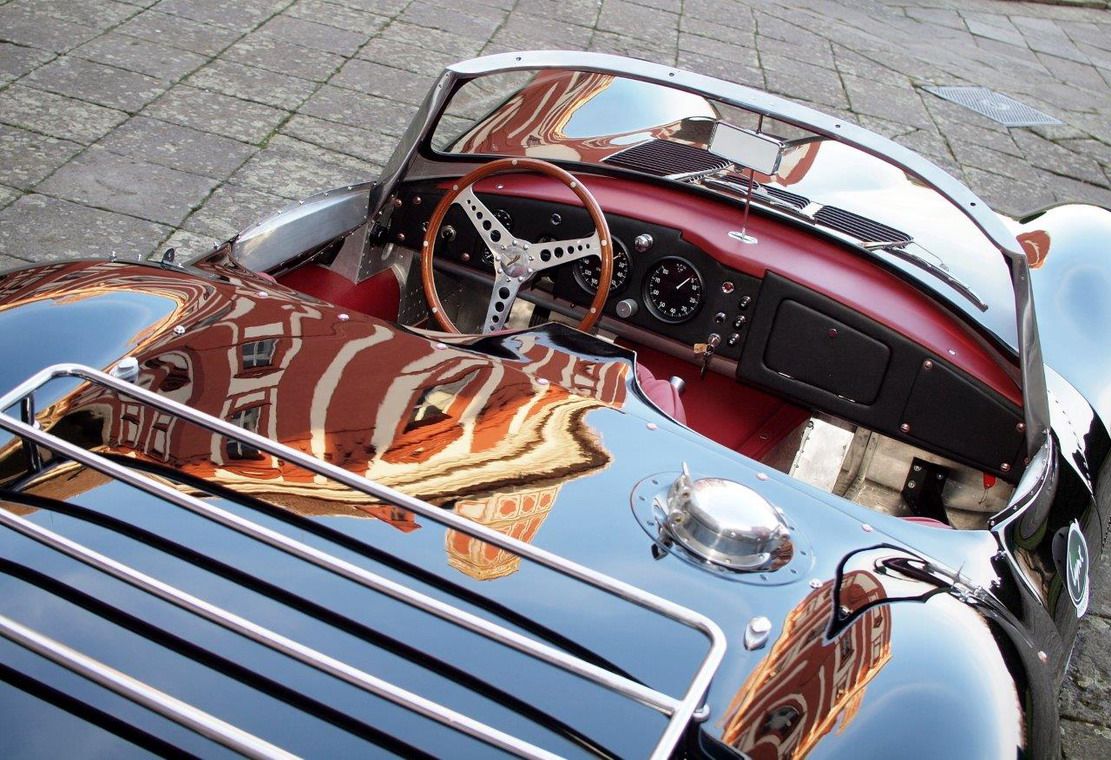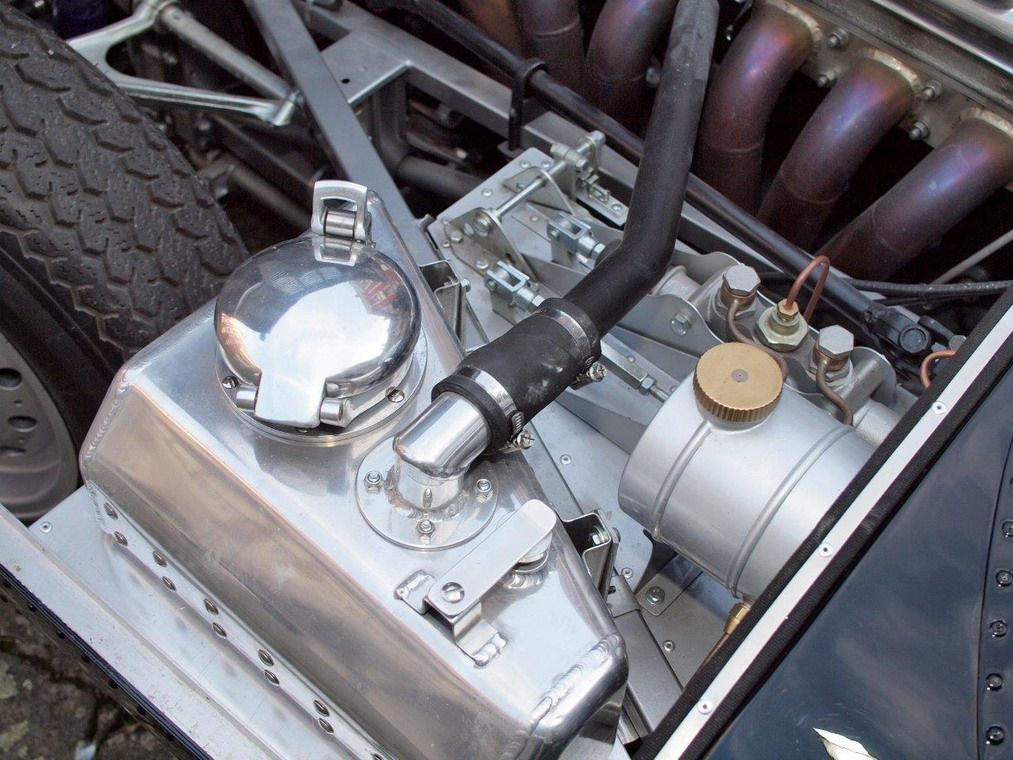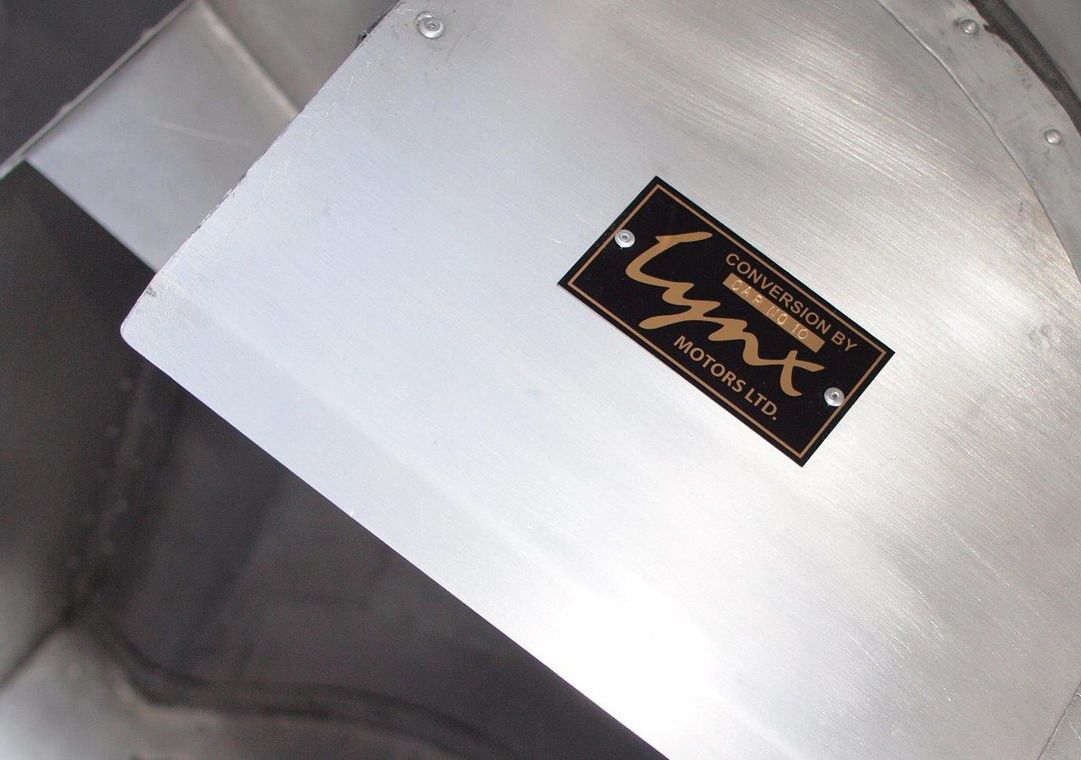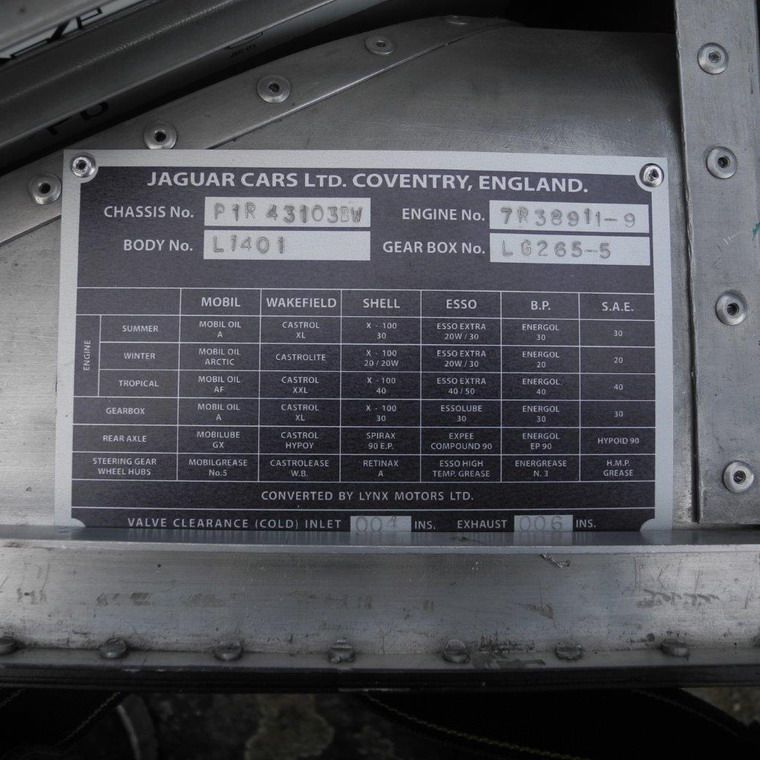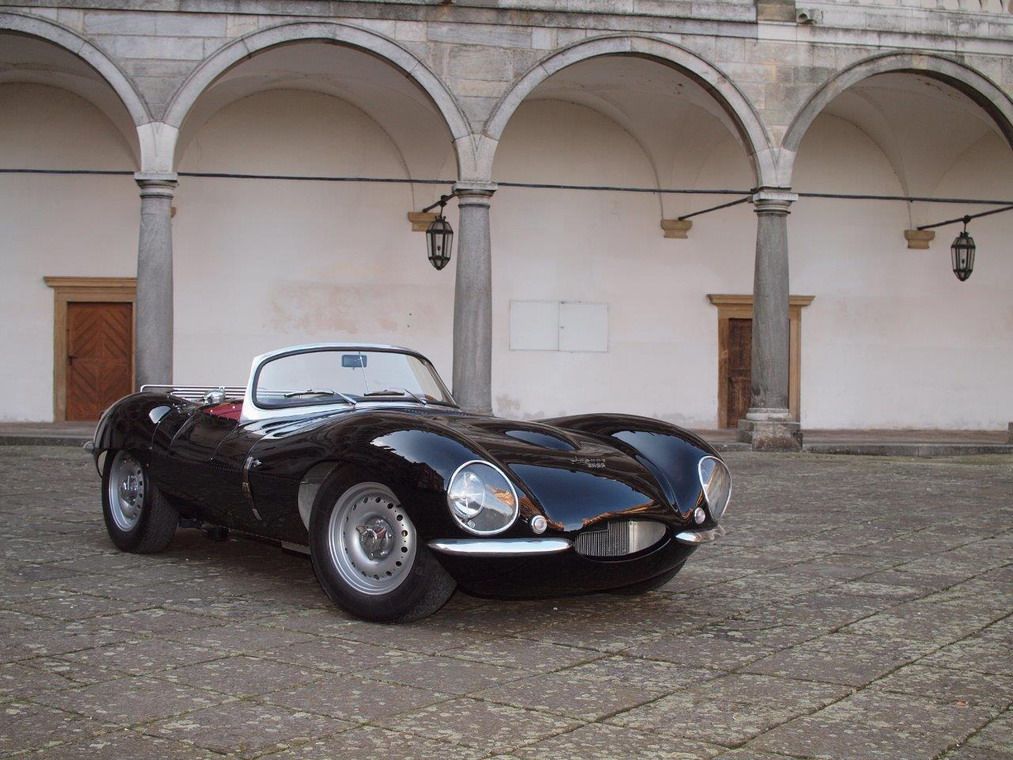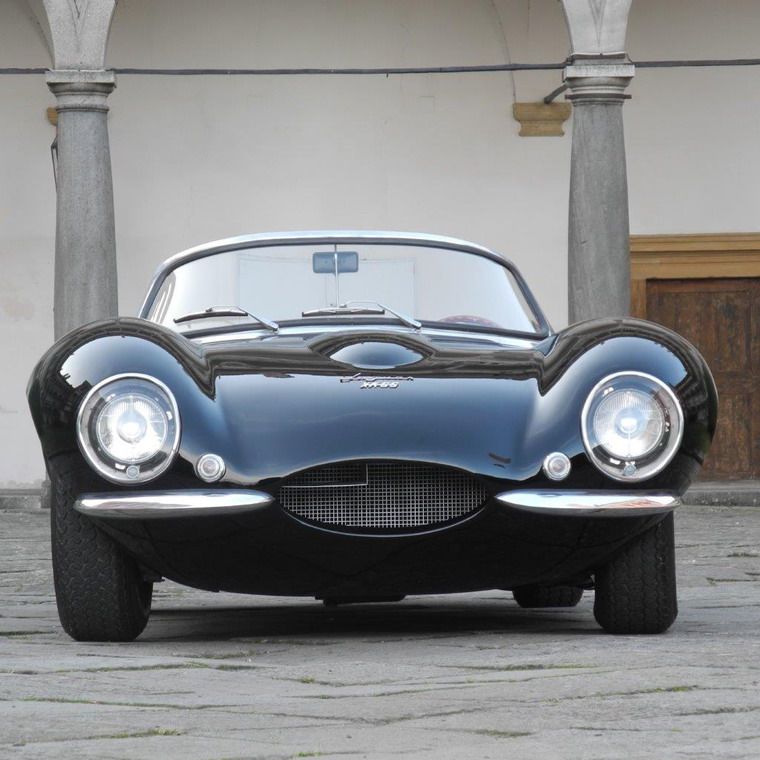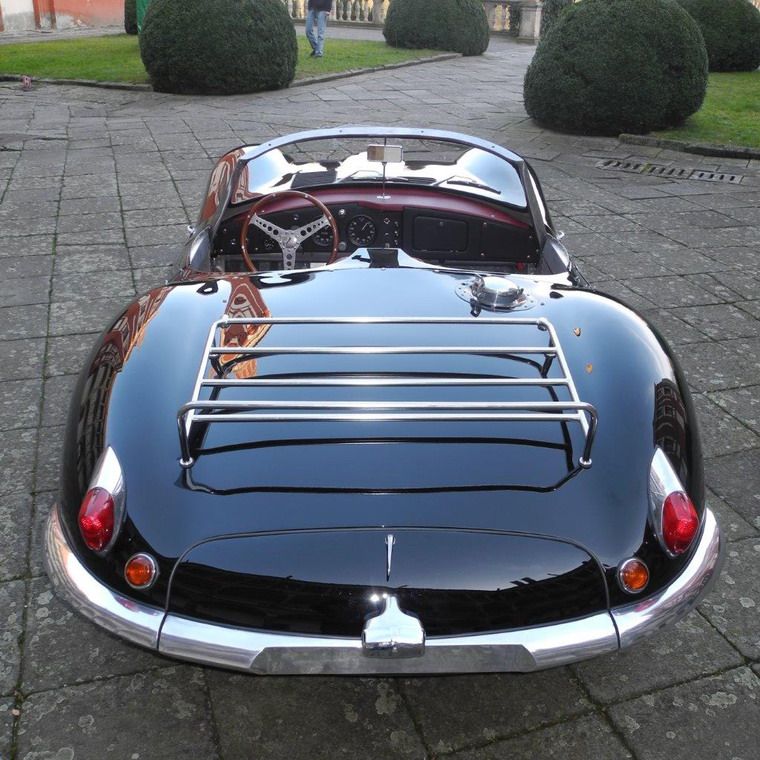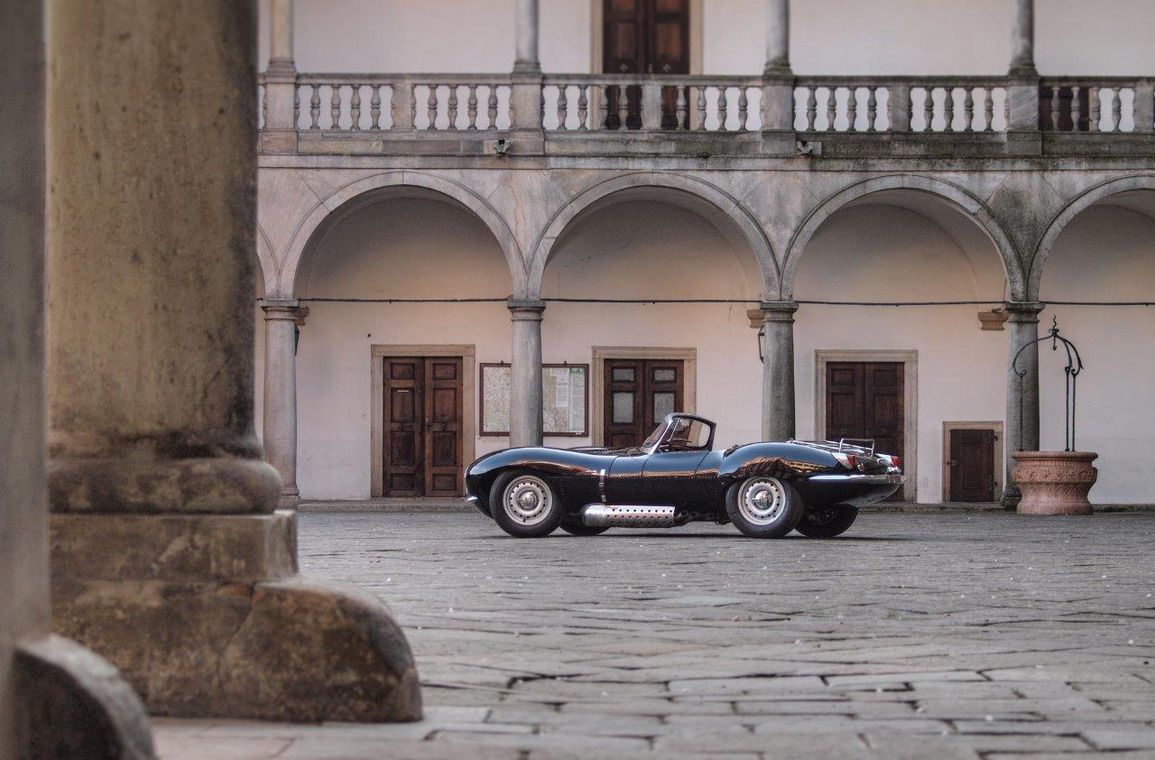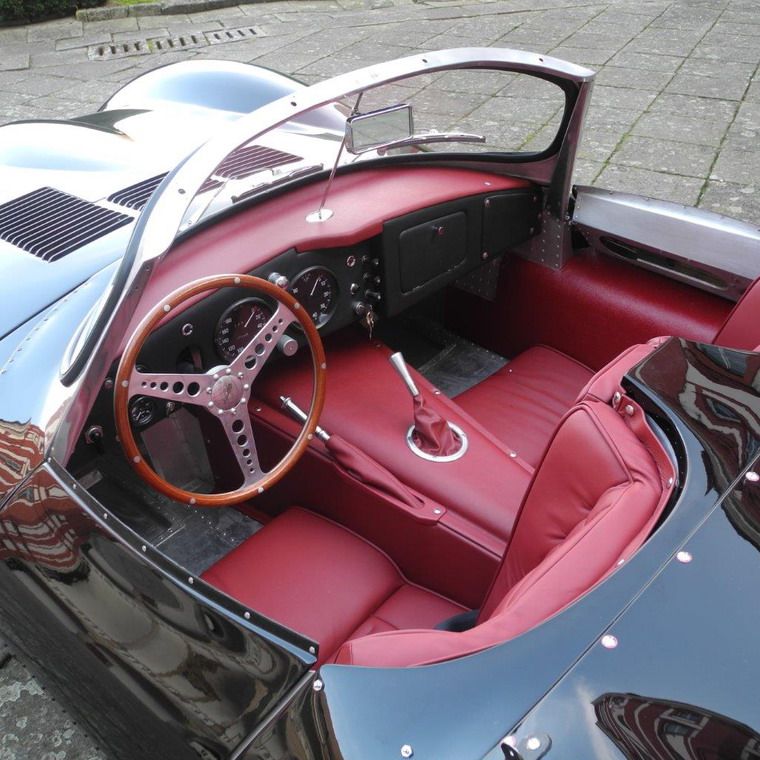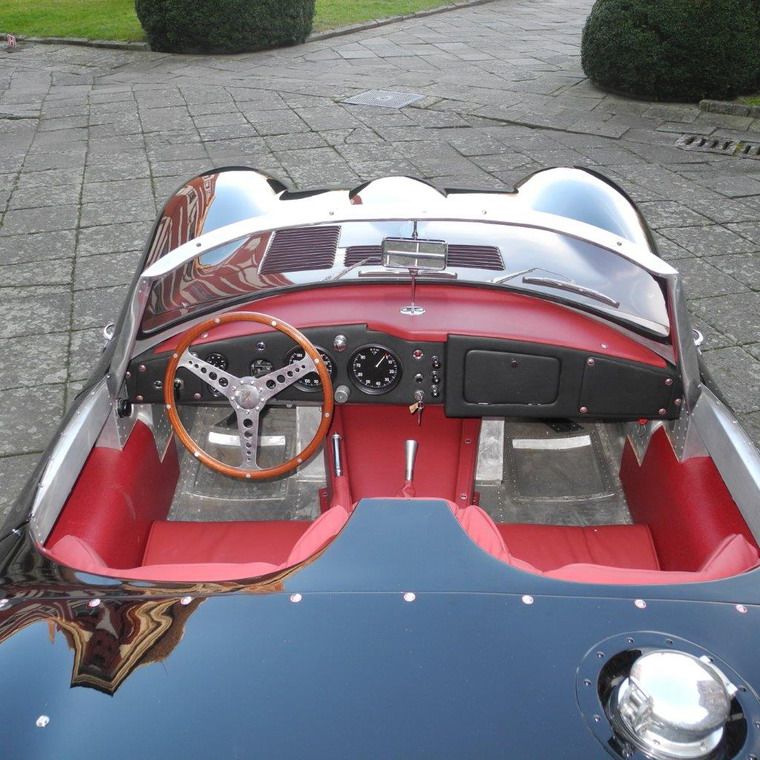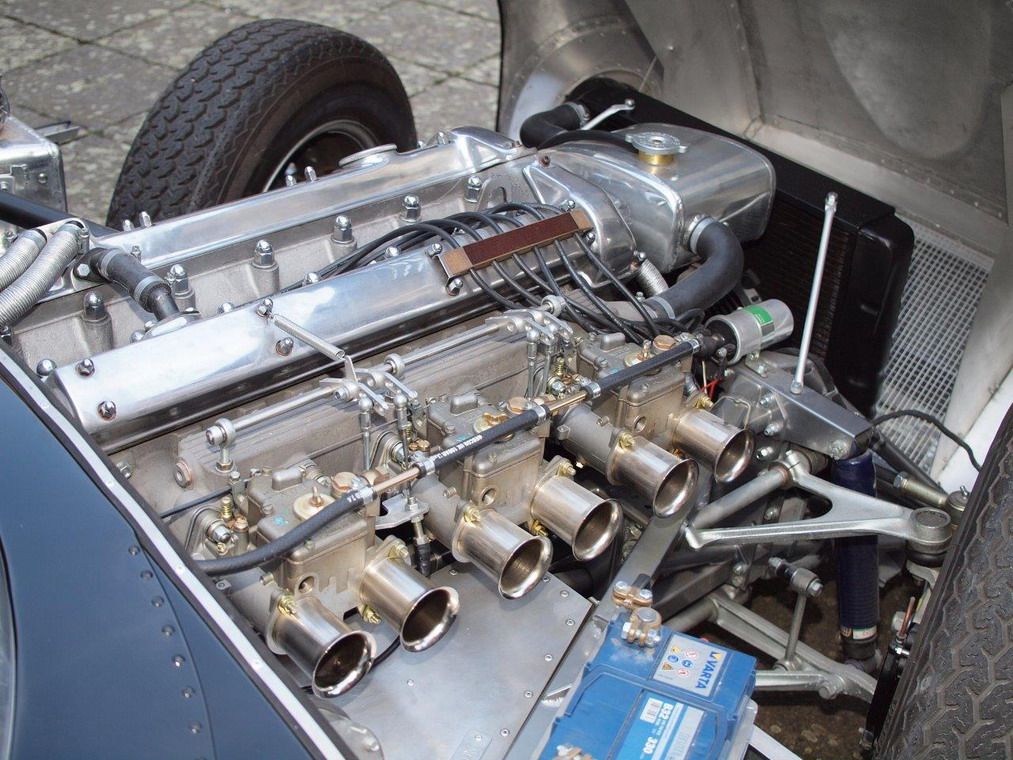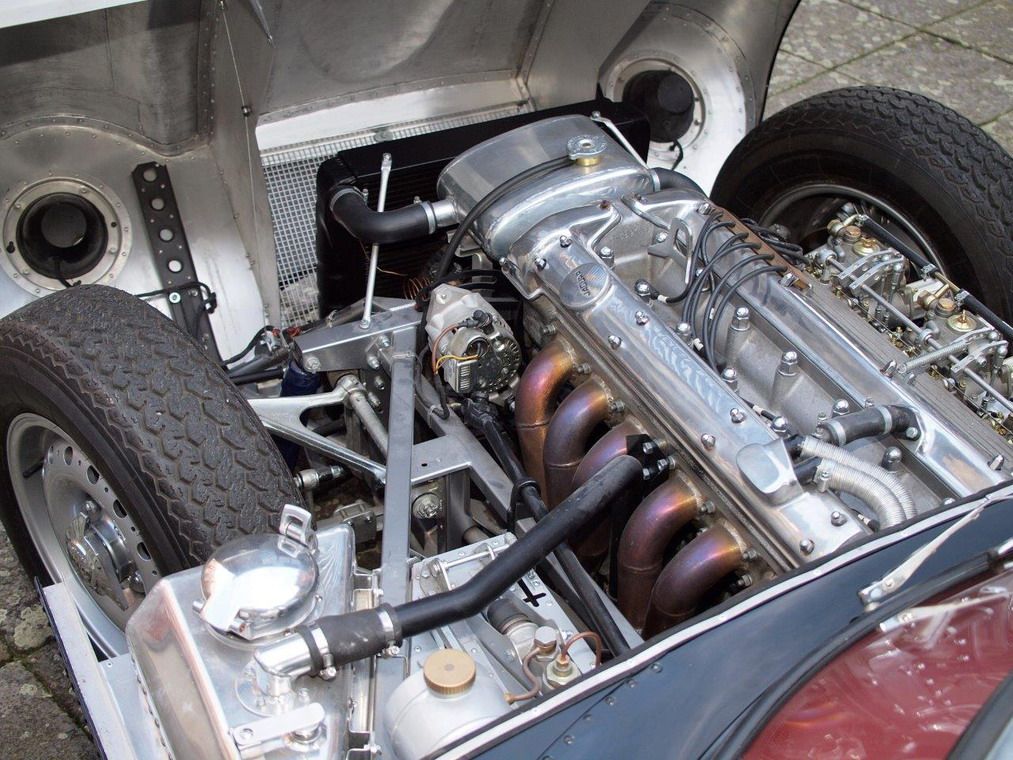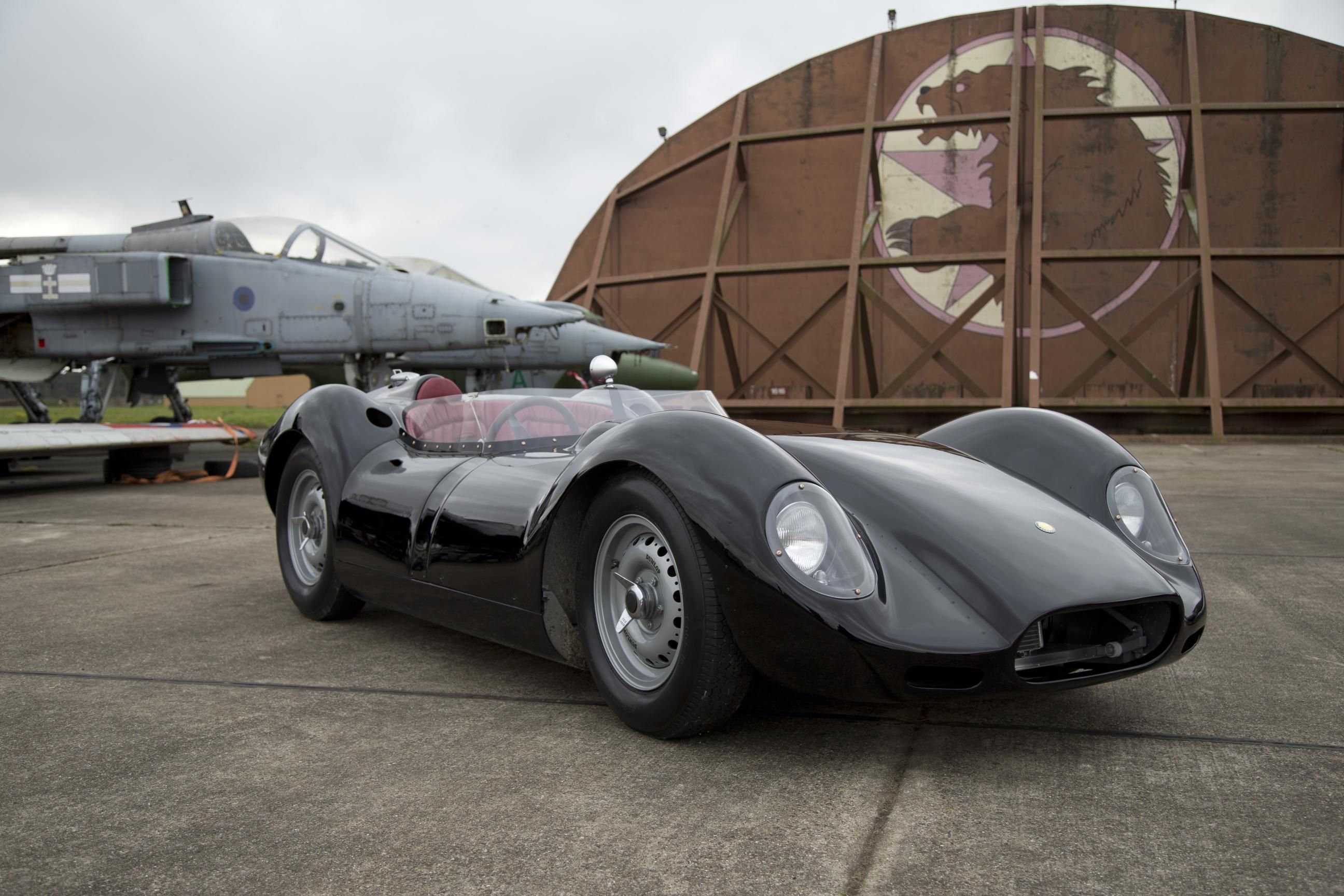It's quite possible that you have heard of the Jaguar->ke39 XKSS before. Steve McQueen famously had one and it's one of those classics->ke503 that sells for double-digit millions at auctions.->ke2845 But the Lynx-Jaguar XKSS is a different story, and it would almost be strange if you had heard of it before this. It is essentially a continuation car, built more than a decade after the original and by special order only from a shop specializing in Jaguar racing->ke447 machines. Lynx (get it?) was a specialty shop dealing in Jaguar C-->ke2405, D-->ke1250 and E-Types,->ke1246 making them the right sort of people to tackle the project of recreating one of Jaguar's greatest.
Like Shelby Cobra->ke2263 continuation cars, the Lynx-built cars were made because authentic originals are so incredibly rare. The XKSS was built as an afterthought, simply because Jaguar had pulled out of motorsports->ke447 after 1956 and had some leftover D-Types. These cars were converted into road cars through the addition of a passenger door, full windshield and a few other bolt-on bits. Since they were made only from leftovers, just 16 of the XKSS were ever built, leaving many wealthy Jaguar fans with feelings of intense jealousy.
Continue reading to learn more about the Lynx-Jaguar XKSS.
1969 Lynx-Jaguar XKSS
- Make: Array
- Model: 1969 Lynx-Jaguar XKSS
- Engine/Motor: V6
- Horsepower: 270 @ 4500
- Torque: 302 @ 4000
- Transmission: Getrag five-speed
- [do not use] Vehicle Model: Array
Exterior
The Lynx-Jaguar XKSS is essentially the same as the original Jaguar, which is in turn very closely related to the D-Type racers. The big rear fin on the back of the D-Type is here replaced by a luggage rack, and this is one of the only cars you'll see where a windshield looks slightly out of place. But overall, the design has a timeless quality, one that meant that Lynx was able to build a car in 1969 that looked identical in most ways to one from 1954 without any problems. There are some parts which might seem like questionable choices for Jaguar to have made, such as the complete lack of a roof, but this is to be expected when you're dealing with a car that was never meant for road use.
Interior
The main thing to keep in mind when looking at the interior of this car is that it wasn't originally designed to carry passengers or offer anything resembling luxury. It is therefore noticeably cramped, and the hump separating the seats is something you don't see in too many other cars. But in spite of this, both Jaguar and Lynx did a good job or retrofitting some luxury into the car, mostly in the form of big swaths of leather. In fact, the Lynx cars were built only to order, and featured bespoke interiors, so even though it's generally difficult to tell just from photos, it's safe to assume that some very high quality leather was used to make the continuation cars. There is no carpet in this car, but the sort of person who is drawn to the idea of owning an XKSS is not the sort of person who would likely mind.
Drivetrain
Here is where you will see the biggest difference between the original XKSS and the continuation car. Unlike the original, the Lynx cars couldn't be based on the D-Type, as nobody would be crazy enough to use one as a donor car. So the Lynx cars are based on the Series II E-Type, and this includes the engine and running gear. It is not entirely dissimilar to the XKSS, as both cars used versions of Jaguar's XK series of DOHC inline-six engine. The original would have used a 3.8-liter version, while this is a 4.2-liter, but they are obviously very similar. The 4.2, though bigger, lacks the high-strung racing tune of the D-Type, and therefore puts out 270 horsepower to the original's 300. But both versions offer the excellent torque for which the XK engines were renowned, and this is considered by many to be the more important factor.
The body is very aerodynamic, and the curb weight is scarcely more than 2,000 pounds, so the power is more than sufficient for a good 0-60 time, with the XKSS's 5.2 seconds still being perfectly respectable today.
Drivetrain Specifications
|
Type |
4.2 liter, six cylinder |
|
Output |
270 HP @ 4,500 RPM |
|
Torque |
302 LB-FT @ 4,000 RPM |
|
Transmission |
Getrag five-speed |
|
0 to 60 mph |
5.2 seconds |
Prices
Continuation cars are never worth as much as the originals, and this is certainly no exception. But as continuation cars go, this one is worth a respectable sum. This is partly because, as rare as the originals are, the Lynx version is even more rare. There was originally 25 D-Types being converted into XKSSs, before a fire destroyed 9 of them still in the factory; 16 remained, but Lynx wound up building only 10 units. Not only is that fewer cars, but with each of those units being specially built to to individual buyers' specifications, there is an extra level of exclusivity to them. This still isn't enough to overcome the authenticity issue, though, and the estimated value of $250,000 - $280,000 is about one tenth of the low end of the spectrum for original XKSS units. Still, it's an excellent reproduction, built by people who knew what they were doing.
Competition
Lister Knobbly
The Knobbly is another relative of the Jaguar D-Type, one that was tweaked for racing by Lister.->ke4976 Originals are worth quite a lot, but Lister itself makes continuation versions of the car that only just recently went on sale. It will cost you more than the Lynx car, coming in at $426,060 for a road-going version. But owning a Lister is different than owning something that is simply a copy of a Jaguar model, and a continuation car made by the original manufacturer is always a more attractive prospect.
1963 Shelby Cobra
Like the XKSS, this is a car that incorporates Le Mans-racer design elements and technology and is available in both extremely expensive original and more moderately priced continuation versions. The big difference here is that you will never be more spoiled for choice when it comes to shopping for a reproduction sports car. You have official cars built by Shelby, officially licensed cars built by third parties, unofficial and often blatant rip-off copies, and a few that are more “reimaginings” of the car. You can find one to fit a wide range of needs and budgets. The downside obviously is that nobody will ever to fooled into thinking that you have a real one.
Read our full review here.
Conclusion
For the collector with an eye to buying cars as investments, this is not going to be the car to buy. It might be true that this has picked up a not inconsiderable amount of value over the years, but given its rarity, it really hasn't been that much compared to similarly rare cars from the original manufacturers. But for the person who has simply wanted an XKSS for his entire life, this might be worth looking into. It's a small fraction of the price, while still being rare enough that people won't turn their noses up at first sight for being a wannabe. The car is still plenty quick, and will offer a fantastic analog driving experience, one that is very close to that of Le Mans racers from the '50s.

